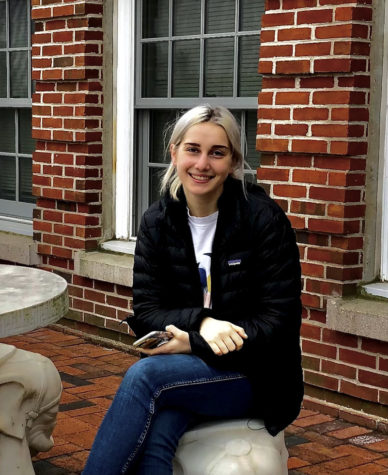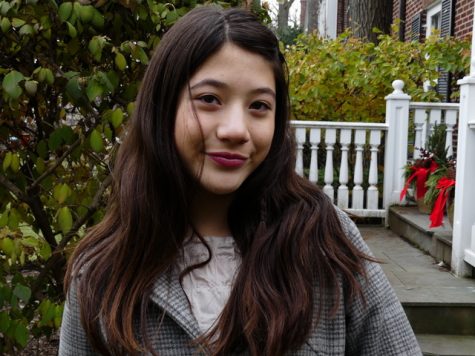How lack of school spirit affects students
September 27, 2019
ETHS has a spirit problem; student attendance and involvement in school-sponsored events has been decreasing. This has caused the administration to reevaluate what spirit events are worth planning and offering for students to attend.
“School spirit, to me, means flaunting and being proud of the school you go to. You know, showing up at sports games, taking part in school-organized events and overall showing a positive attitude towards your school,” says freshman Amelia Myers.
Myers says she’s excited to see what high school spirit looks like but so far has been disappointed in ETHS students’ enthusiasm.
“I’m excited to be at a school where people seem to make better efforts at demonstrating school pride. However, from what I’ve seen so far, I think ETHS could still use some improvement in that area,” says Myers.
Myers is not alone in her assessment of ETHS’s school spirit; both staff and students have observed a decline in student participation at school events and overall spirit within ETHS.
Llyoandra Cooper, the ETHS college & career services support staff and student council sponsor, agrees with Myers that school spirit is essential for a positive school environment.
“School spirit definitely speaks to the moral. Like what are we doing here, how do we love our community? Is it just wearing orange and blue on Fridays; is it just showing up to pep rallies; is it just talking about an event when it is coming up,” Cooper says.
Many suggest that spirit can be seen from the events that the school holds and the participation and engagement of students there. There’s been a reduction in school dance turn out, which has caused the cancelation of the Freshman-Sophomore Formal.
Many current sophomores are mad about the cancelation, as they were the first class to not have the Frosh/Soph formal.
Nichole Boyd, the director of the Student Activities and the Student Success Center, has noted this decrease in student attendance.
Boyd says that only 10% of the student body voted for the Homecoming theme. Along with low voting rate, overall attendance also does not represent the majority of students. “That’s one of the things that I’m always looking to improve. We get around between 800 and 900 students at the homecoming dance,” says Boyd. “With our population, I would love to see it exceed a thousand. That has been my goal for a few years.”
It can be discouraging to staff members, such as Boyd, when students don’t attend the events the school plans.
“A lot of time, energy, effort and resources goes into the stuff that we provide for students,” says Boyd, referring to ETHS’s Homecoming events. “To have something like this once a year, I can’t imagine why everybody just doesn’t want to be there to have a good time.”
Many staff members are also ETHS graduates, including Boyd and Cooper, and they remember Homecoming and pep rallies being a defining experience in high school.
“I was the school spirit kid in high school. I was at the dance all four years. You know, it’s fun, but it was also the 90s. We didn’t have social media; there was no other place to be than here,” Boyd says.
The level of interest in school events over the years has shifted, since school spirit and class participation was popular just 10 years ago, when staff members such as Cooper attended ETHS. Boyd attributes this change to social media.
With social media and technology becoming more prominent, there has been less of a need for in-person social connections. Wired claims that social media has inhibited the social interaction of teens, saying that “teens now have so many ways to connect and communicate that there’s no need to gather in person.”
Cooper offers another cause for ETHS’s lack of spirit. She says that the academic motivations have changed for students, who are now focused on graduating and their post-graduation plans, rather than experiencing high school.
“We think of movies or TV shows where they show high schools and I’m thinking of High School Musical and I’m like, wow high school looked really fun,” says Cooper. “Then, I see you all just going through the motions of going to class, going to lunch, going to the game or maybe a play, but I just don’t see the excitement.”
While participation and engagement in school dances are often emblematic of a school’s spirit, ETHS’s student body lacks a shared enthusiasm for these events, as shown by the low attendance of the Freshman and Sophomore Formal, which was cancelled last year.
Many current sophomores are mad about the cancelation, as they were the first class to not have the Frosh/Soph formal.
“I’m really upset that we don’t have a formal,” sophomore Lily Mason says. “This is the only chance for us to get all dressed up, and have a fun event at the school until prom.”
The main reason many students are enraged about this decision is because underclassmen now lack the opportunity to attend a formal dance as Homecoming, the only other dance for underclassmen, is traditionally informal. “No one gets dressed up or anything. You go with your friends and wear jeans and a t-shirt,” says sophomore Ellie Oif, referring to the Homecoming dance.
Even though some students have expressed that they want more formal dances, Boyd claims that the majority of the student body are not taking advantage of the events the school currently offers, like Homecoming.
“It’s been communicated that it’s not the thing for sophomores and juniors to do; it’s a freshman and senior thing,” says Boyd, referring to Homecoming.
Mason also agrees that Homecoming is not an event that everyone at the school goes to. “No, we don’t go to Homecoming. Homecoming is meant for the freshman and seniors,” says Mason, who went to Homecoming last year as a freshman, but is not planning on attending this year.
Cooper participates in much of the planning for these events as the student council sponsor. Her main concern in the planning process is knowing what students want, due to the same lack of communication that Boyd mentions. “As a staff member, I just want to know what you all want. How do you think you should show school spirit; what do you think that looks like?” asks Cooper.
To address the communication gap between students and staff, Cooper says that they’re “revamping” the student council. She hopes this will create more excitement among the student body for planning and attending events geared towards boosting ETHS spirit and morale.
“The previous student council structure was that there were leaders in the larger student body and there were class councils,” says Cooper. “It hasn’t dissolved completely, but we want to know: do students really know and recognize the purpose of a student council? The benefits of a student council and why is it important that it is accessible to them?”
As a part of the new student council, there are no longer class elections for student council board members, in efforts to make the club more accessible for the larger student body to participate in.
“It wasn’t something that was really working as well as it used to, so now we are trying to find ways to fix it,” says Cooper. “Now, the student council is coming back and it is going to be better than ever. We are looking to see how we can take this generation of students and make it really beneficial for them.”











